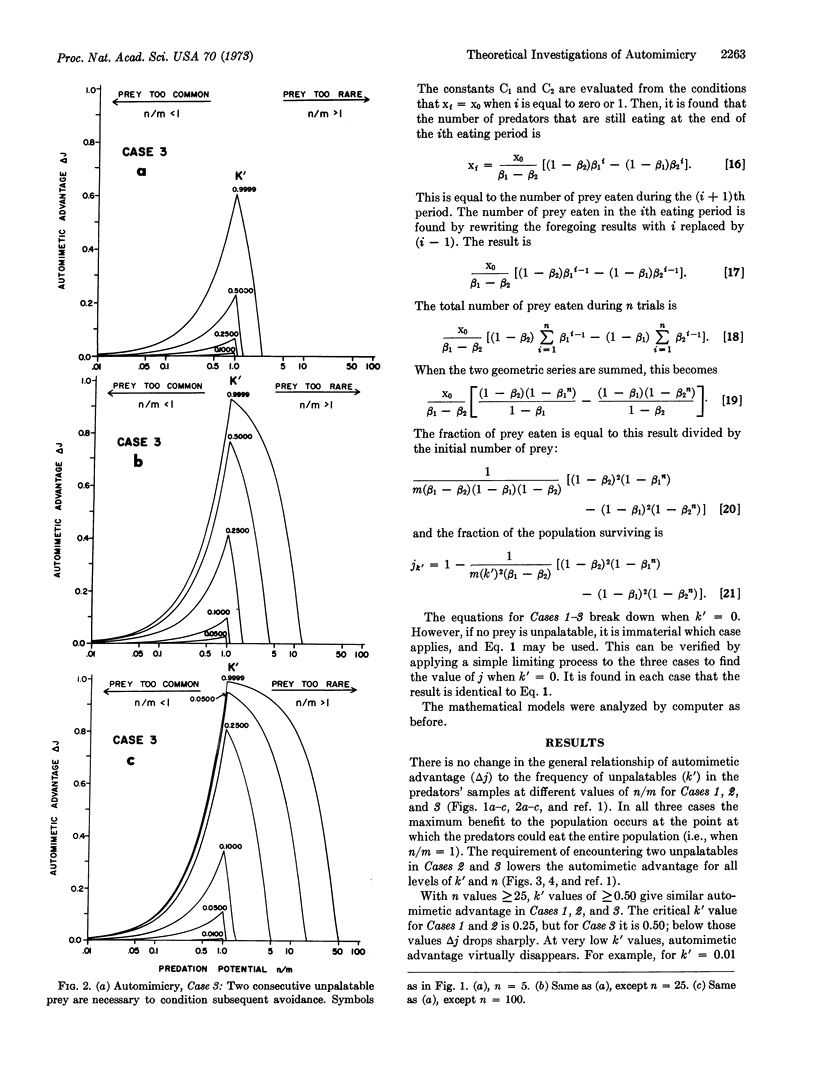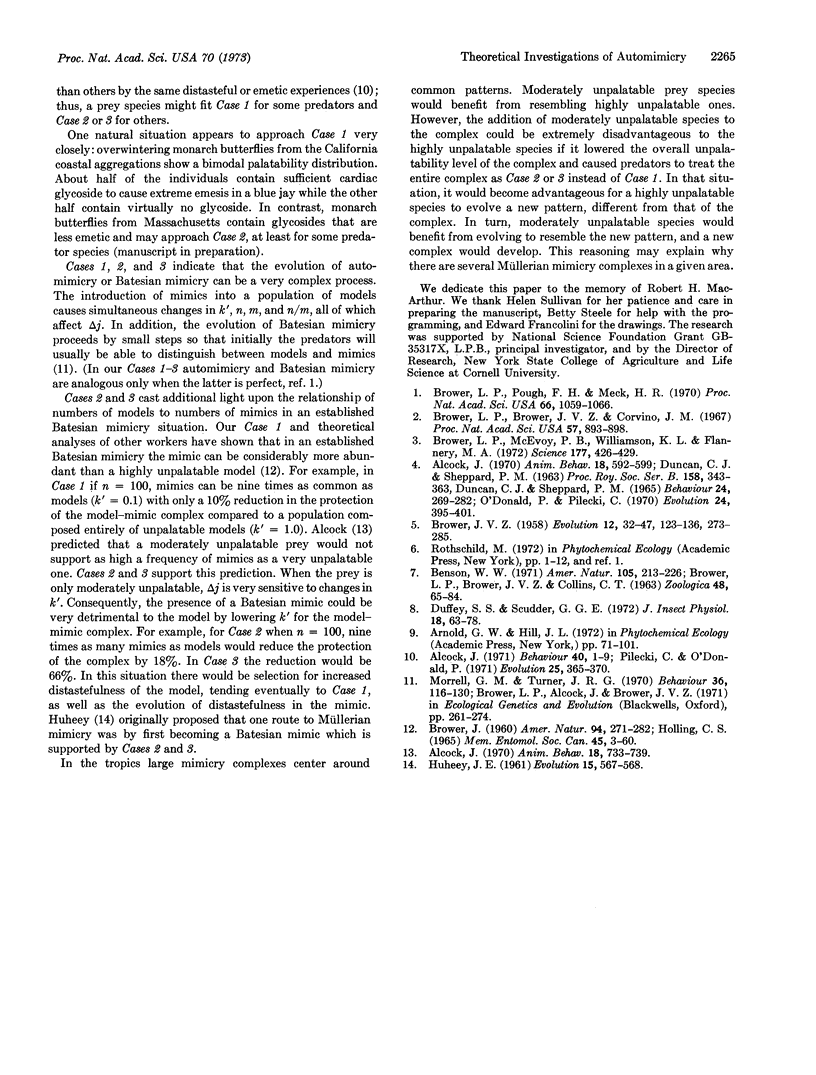Abstract
We previously explored automimicry assuming that a species of prey was so unpalatable as to promote conditioned avoidance for a period of time after a predator encountered a single individual (Case 1). In this paper, we assume that the prey is less noxious and that two encounters are required. Case 2 allows the two encounters with unpalatables to be separated by any number of palatables, while in Case 3 the predator must encounter two unpalatables, consecutively.
The general relationships in the three cases are similar, but the automimetic advantage is reduced moderately in Case 2 and greatly in Case 3. To attain the same automimetic advantage as in Case 1 requires an increase in the proportion of unpalatables, or in the induced rejection period, or both. Consequently, selection will tend to increase the unpalatability so that Cases 2 and 3 converge to Case 1.
Species that are uniformly and highly unpalatable can afford to be more dispersed than automimetic species. Case-2 and -3 automimetic species will benefit greatly from gregariousness, while in Case-1 automimicry situations this is less important.
Keywords: unpalatable, predator, gregariousness, prey
Full text
PDF




Selected References
These references are in PubMed. This may not be the complete list of references from this article.
- Brower L. P., McEvoy P. B., Williamson K. L., Flannery M. A. Variation in cardiac glycoside content of monarch butterflies from natural populations in eastern North America. Science. 1972 Aug 4;177(4047):426–428. doi: 10.1126/science.177.4047.426. [DOI] [PubMed] [Google Scholar]
- Brower L. P., Pough F. H., Meck H. R. Theoretical investigations of automimicry, I. Single trial learning. Proc Natl Acad Sci U S A. 1970 Aug;66(4):1059–1066. doi: 10.1073/pnas.66.4.1059. [DOI] [PMC free article] [PubMed] [Google Scholar]
- Brower L. P., van Brower J., Corvino J. M. Plant poisons in a terrestrial food chain. Proc Natl Acad Sci U S A. 1967 Apr;57(4):893–898. doi: 10.1073/pnas.57.4.893. [DOI] [PMC free article] [PubMed] [Google Scholar]
- DUNCAN C. J., SHEPPARD P. M. CONTINUOUS AND QUANTAL THEORIES OF SENSORY DISCRIMINATION. Proc R Soc Lond B Biol Sci. 1963 Oct 22;158:343–363. doi: 10.1098/rspb.1963.0052. [DOI] [PubMed] [Google Scholar]
- Duncan C. J., Sheppard P. M. Sensory discrimination and its role in the evolution of Batesian mimicry. Behaviour. 1965;24(3):270–282. [PubMed] [Google Scholar]


